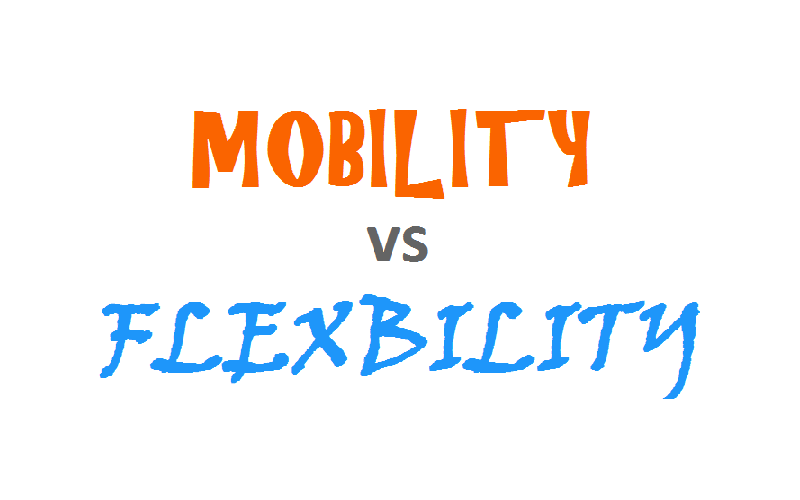Ever wondered what the difference is between mobility and flexibility? The issue with mobility is everyone has a different definition of it and to make it more confusing, often these terms are used interchangeably.
So how do I differentiate between mobility and flexibility?
Flexibility is the ability to passively achieve a range of motion (without activating your muscles) using an external load. This external load can be gravity, someone else moving the joints or pulling/pushing yourself into a certain position (e.g. using your arm to pull yourself leg towards you to improve hamstring flexibility).
Mobility on the other hand requires you to actively achieve a range of motion. This requires motor control/strength. So for any maths nerds like me:
Flexibility = Passive Range of Motion
Mobility = Active Range of Motion
So
Mobility = Flexibility + Motor Control/Strength
Why Is Mobility So Important?
There are two main reasons – injury prevention/rehab and improved performance.
It was thought that improving someone’s flexibility would make them less prone to injury. However recent studies have confirmed this is not the case and may actually increase the chances of getting injured.
An example of this would be a footballer who regularly stretches their groin muscles to improve flexibility. But if during a match they go for a tackle and their leg goes into an outstretched position, they will have no control in this position. This will mean they are susceptible to injuries.
However if they train on improving their mobility, should their leg go into a stretch position, they have the ability to control the movement and have some strength to reduce the chance of getting injured.
Also, improving mobility can improve performance. In order to produce maximum performance, a stable base is required. But a stable base can only be created if the athlete has all of the required joint mobility.
How to Improve Mobility?
One way this can be done is by initially stretching a muscle and then doing isometrics in the stretched position (isometrics are a type of strength training in which the joint angle and muscle length do not change during muscle contraction).
For example, after doing a calf stretch against a wall, trying pushing the sole of your foot into the wall gradually increasing the pressure without your body moving. This will improve motor control and strength at the end ranges.
A foam roller can also be used to improve mobility however foam rolling on its own has the same fault as stretching. There is no motor control/strength component to it. However, again this can easily be fixed with some end range isometrics.
Due to the benefits of increasing mobility, it is advised that everyone spend some time every day trying to improve their mobility.
Reference

